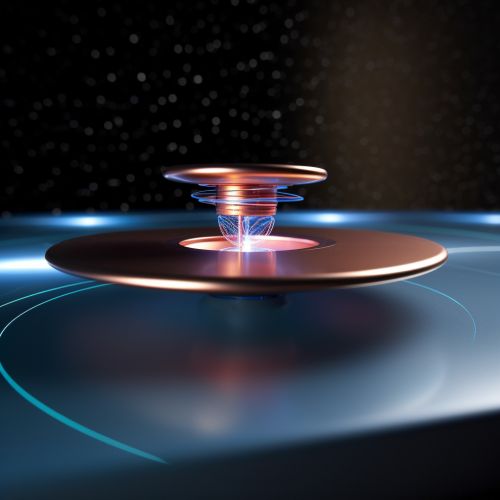The Physics of Quantum Levitation
Introduction
Quantum levitation, also known as quantum trapping, is a phenomenon in physics where a superconductor is locked in space above a magnetic field. This is a direct result of the Meissner effect and flux pinning, two key principles in the field of superconductivity.


Superconductivity
Superconductivity is a quantum mechanical phenomenon where certain materials exhibit zero electrical resistance and expulsion of magnetic fields when cooled below a characteristic critical temperature. This state is characterized by the formation of Cooper pairs, which are pairs of electrons with opposite momenta and spins that move through a superconductor without scattering off impurities and lattice vibrations, thereby maintaining a steady current.
Meissner Effect
The Meissner effect, discovered by German physicists Walther Meissner and Robert Ochsenfeld in 1933, is a phenomenon wherein a superconductor in a state of zero electrical resistance will expel an applied magnetic field. This expulsion of magnetic fields is not perfect, and some magnetic field lines can penetrate the superconductor, a phenomenon known as flux pinning.


Flux Pinning
Flux pinning, or the penetration of magnetic field lines into a superconductor, is what allows for quantum levitation to occur. The magnetic field lines that penetrate the superconductor become trapped in defects in the crystal lattice. This pinning of the magnetic field lines causes the superconductor to be locked in space above the magnetic field, a phenomenon known as quantum levitation.
Quantum Levitation
Quantum levitation is the phenomenon where a superconductor is locked in space above a magnetic field due to flux pinning. This allows the superconductor to levitate above the magnetic field, seemingly defying gravity. This levitation is not due to magnetic repulsion, but rather due to the locking of the magnetic field lines within the superconductor.


Applications of Quantum Levitation
The principles of quantum levitation have potential applications in various fields. One such application is in Maglev trains, which use magnetic levitation to achieve high speeds with low friction. Another potential application is in the field of energy storage, where superconducting magnetic energy storage systems could potentially provide efficient, high-capacity energy storage.
Limitations and Challenges
Despite its potential, there are several challenges to the practical application of quantum levitation. One of the main challenges is the need for low temperatures for superconductivity to occur. Additionally, the materials currently known to exhibit superconductivity are not suitable for large-scale applications due to their high cost and limited availability.
Conclusion
Quantum levitation is a fascinating phenomenon that demonstrates the unique properties of superconductors. While there are challenges to its practical application, the potential benefits in fields such as transportation and energy storage make it an active area of research in the field of physics.


